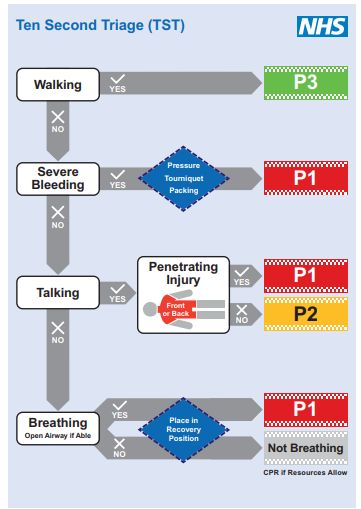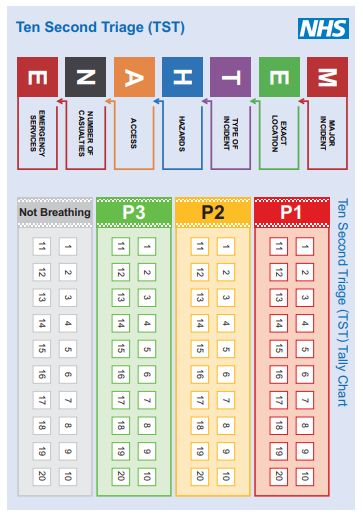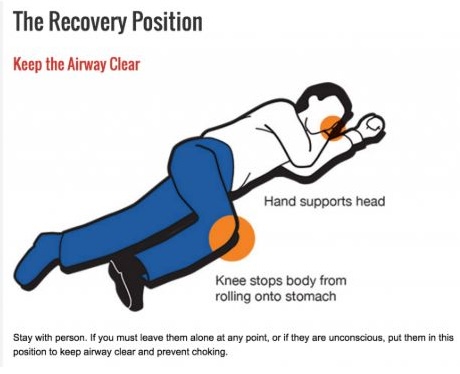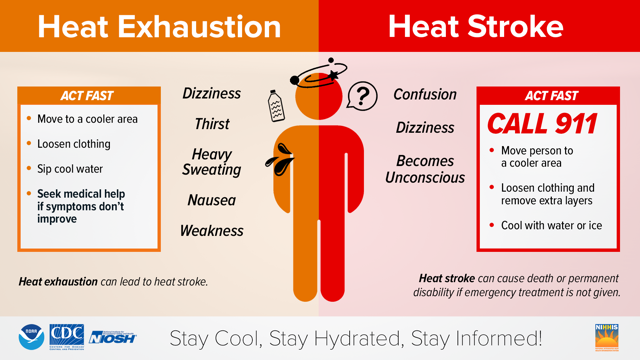SW NET Consortium Updates
SW NET Consortium (Zoom meeting) with Marcel Rodriguez. Marcel has been leading the monthly advanced training meetings for SW NETs for over 15 years.
Scroll down for older updates.
SW NET Consortium (Zoom meeting) with Marcel Rodriguez. Marcel has been leading the monthly advanced training meetings for SW NETs for over 15 years.
Scroll down for older updates.
Marcel Rodriguez [MR] presiding — Maryellen Read [MeR] notes
Peter Drake: Emergency know-how
Maryellen R: Use Laminated First Responder Card instead of wasting time and delaying action by riffling through an overstuffed wallet looking for shabby tiny (outdated?) paper insurance cards and relevant numbers.
Marcel (MR) Request a Welfare Check (911 if immediate danger, or 311 or 503.823.3333 non emergency line) to check on a neighbor if you are concerned about someone’s welfare, or someone has not been seen or heard from in a while.
This is for non clinical responders (eg NETs).
BOTH START and TST are aimed at lay person rescuers; have life saving interventions, intended to be rapid, uses the same colors as START method.
Two-sided reference card from NHS.. (UK National Health Service)


The Recovery Position: This was not taught in NET training nor in the START procedure. It is an important part of the CPR (Cardio Pulmonary Resuscitation) training and procedure. Diagram below:

End of report by MeR.
Heat stroke is an emergency. Call 911.

From weather.gov: During extremely hot and humid weather, your body's ability to cool itself is challenged. When the body heats too rapidly to cool itself properly, or when too much fluid or salt is lost through dehydration or sweating, body temperatures rise and you or someone you care about may experience a heat-related illness. It is important to know the symptoms of extreme heat exposure and the appropriate responses. The Centers for Disease Control and Prevention (CDC) provides a list of warning signs and symptoms of heat illness, and recommended first aid steps. Some of these symptoms and steps are listed on this page: heat-illness
Important Note! Using a fan to blow air in someone’s direction may actually make them hotter if heat index temperatures are above the 90s. For more information on all of these heat related illnesses, see the notes on Heat-related Illnesses, from CDC [LINK]
Emergency Warning Systems for the Portland Area by Ralph Brooks, Forest Park (South) Firewise Neighborhood Leadership, submitted the data below from the May 3, 2025 Skyline Ridge Wildfire Ready Workshop. [Bracketed comments by Helen Chauncey, Far SouthWest NET] Go to: https://collinsview.org/ Scroll down to: Being Prepared! ★ Emergency Alerts for the Portland Area - as of May 2025 [PDF] And press the link to the PDF!
Radio Mapping of Multnomah Village by Tom Boeker, Multnomah NET Team Lead. FRS radio communication is challenging because of valleys and terrain. A relay system involving BEECN volunteers may be an answer.
Recommended viewing on Net Flix: Oklahoma City Bombing: American Terror. The 1995 bombing of an Oklahoma City federal building was the deadliest act of domestic terrorism in US history.
Times are “interesting” at the moment. A lot of things - real impending challenges-personal, global, family, physical etc. — feel outside of our control. How do we prepare and deal with all of these things without having them tyrannize our lives? What skills can we use to prepare for and process impacting events?
SOME TECHNIQUES:
DISCUSSION:
FS: Give yourself permission to feel bad, and pull the covers over your head – a physical acknowledgement of stress.
PD: Go out and do something else-any change to your physical self helps reframe.
TB: The looping replay of a decision (“Coulda Woulda Shoulda”) is an indication of the need to explore why we’re having these thoughts.
HC: NETs are NOT RESPONSIBLE FOR – nor are they trained for - the health or safety of the neighborhood. That is the job of the professional First Responders. The NET instructions for After an Emergency Priorities: Be Safe yourself, Ensure that your family is safe, then neighbors’ wellbeing. [From the PBEM NET site: “Understand the role of NET in an emergency or disaster. NETs are not teams of professional first responders. NETs act as a volunteer extension of first responder services offering immediate help to victims until professional services arrive.”
AFTER MEETING DISCUSSION:
Maryellen Read: “RESPONSIBLE” that Helen brought up is a Key Word/Element. It is the “kireji” cutting word in haiku that changes your perspective/perception of the situation. ...The topic was focused on a balance between an individual’s preparedness, process for impending and after events and techniques for retaining/regaining a healthy mind set. “Responsible” seems to cut through all the discussion of control and shoulda woulda coulda contrition with the simple question(s) “Am I responsible for that person? For that situation?” ...
Is this too simplistic? Is it cathartic? Does it solve anything? Or give an additional effective process for stability? Thoughts?
Marcel Rodriguez: I think that the question of “responsible” helps us move to a net positive from a net negative. If I am not responsible, everything I do is a plus. It is an additive action. ...
If I view myself as responsible for a situation, it is likely that I will use that as a yardstick of the actions that I “shoulda, woulda, coulda” and is more likely to be felt as a negative or as a failure, even if the actions are the same.
The Legacy Oregon Burn Center (OBC) is the only Burn Center from Seattle to Sacramento. It includes offshore incidents. A Burn Disaster at OBC is when there are more than 4 patients.
Burns are a very common injury. The survival rate is 97.7%
Burn Severity is a measure of how deep, and how big an area is affected.
Lay saran LOOSELY!! DO NOT WRAP!! Cover plastic wrap with clean dressing to protect. Can use a cut up. Or sheet pieces. An old T shirt washed and dried in drier, then stored in baggie is a good substitute dressing. If no plastic wrap, use sterile 4x4s, non-fluffy dressings.
There are direct lightning strikes and splash over (aka side flash) lightning strike.
(Note by M.R: National Weather Service has a great - scary - graphic “Five Ways Lightning Strikes People” weather.gov/safety/lightning-struck [LINK].)
A bigger problem with firefighters is toxic inhalation. The off-gasses from burning stuff is toxic, contains cyanide among other toxins, leading to cyanide poisoning. Cyanokit is used as an antidote to cyanide poisoning.
These are Maryellen Read’s notes. All mistakes are hers alone. Comments welcome! (MR)
Merilee Karr, South Burlingame NET Lead, was on NPR’s Think Out Loud (3/12/2025) discussing the need for more public restrooms to protect us from intestinal diseases like dysentery and antibiotic resistant shigella. Portland health officials report waste-borne illness is rampant among the city's homeless population. Cholera killed more Haitians after the 2010 earthquake than the earthquake itself. Merilee is the president of Phlush. Years ago the “Portland Loo” was the standard in public restrooms. https://www.phlush.org/ [LINK] .
Contusions, abrasions, lacerations, avulsions, amputations, punctures, and impalements are the most common injuries.
It indicates a traumatic force and contusions on abdomen or lower back can be a sign of significant internal bleeding.
Considerations:
They are oozing or weeping wounds with not a lot of blood but they tend to be really dirty.
Considerations:
Treatment:
Considerations:
Treatment:
Considerations:
Treatment:
Considerations:
Treatment:
Considerations:
Treatment:
Considerations:
Treatment:
Window Smasher/ Seatbelt Slasher Tool should be in your car by driver’s seat, NOT in trunk or glovebox, which will be inaccessible because of airbag deployment in a crash.
West Portland Park NET has 5 members now.
There is always the potential for cold injury. Treat all cold subjects intentionally and aggressively. It is critical first aid. Your patient should never be colder than they are the minute you arrive.
Protection from the elements
Water amplifies all these effects
Assessment of cold injury: Anticipate a cold injury when:
Try to have the right equipment for responding to cold injured subject
Frost Nip: mild form of frostbite, irritated skin red, or pale.
Frostbite: Partial or complete freezing of tissue. White, blue or mottled skin feels waxy or hard, reduced feeling in area. Severe Frostbite means significant swelling and pain.
Trench Foot: non freezing cold injury extremely painful, pruned pale skin, decreased circulation. Tissue and nerve damage. Caused by prolonged exposure to wet cold.
Reduction of body core temperature below 95°. (Normal body temperature: 98.6°)
BIGGEST RED FLAG IS CHANGE IN LEVEL OF CONSCIOUSNESS. Keep tabs on Team members for signs of hypothermia.
Remove cold challenge: insulate and protect from cold, wind, dehydration, Be very gentle. The moderate/severe hypothermia patient is very fragile. Move them in horizontal position. Carotid pulse may be very faint (2-3 BPM) give it a full 2 minutes.
Make A Burrito: Put a tarp down; then insulating layers on top of it; blankets, sleeping bag, mylar blanket. Wrap patient up in all this. Fill with heat warmer (like Nalgene bottle in sock with hot water) not directly on patient. Put at least two layers above patient and below insulation.
Insulated from ground reduces conduction. Warm layers and reflective layer protect body heat from radiation. Wind proof, water proof reduces convection and evaporation. Packaging retains heat but does not create it.
Get fluids into them. Hot JELLO. Sugar and calories are exactly what is needed. Calories warm patients, not hot drinks. The temperature of the drink doesn’t matter so much. Alcohol has detrimental effect.
Trauma and Hypothermia is an issue:
Immediate (acute) Immersion, or subject has been out for many hours, not been moving, injured, wet. Chronic: not a single event: Over time the body temperature drops to moderate hypothermia levels. Subject may be older, and/or have economic or shelter challenges, cognitive and or circulation problems, other health problems.
The #1 Vital sign is a change in the level of consciousness (too hot/too cold)
These are Maryellen Read’s notes. All mistakes are hers alone. Comments welcome
Bacillus Thuringiensis Israelensis (BTI) granules in pools, bird baths and puddles of water control mosquito larvae. Other BT variants control other pests like armyworm, beetles, flies. It is a naturally occurring soil bacterium, not a poison. Ecologically safe. Available in nurseries and hardware stores.
Sasquatch Hunters died of exposure during their Christmas Eve expedition to find Sasquatch. They were not dressed or equipped for the weather. $6000 of the Skamania County Search and Rescue team’ equipment was stolen after the recovery mission. Community members donated over $73,000 to replace it.
Using Propane? If you refill a propane tank in the cold, it will exhale some gas when it gets warm.
Generators! Extended technical discussion on experiences with generators during power outages. A generator will power a fridge for 12 hours, a furnace for 6 hours. Understanding grounding the generator is important. The technical discussion involved grounding wiring and what NOT to do, like using a neutral-ground bonding plug (=suicide cord/cable)
How about a Bingo Card instead of a list of New Year’s resolutions?
NET WINTER PREPARATIONS
THIS IS THE ONE YEAR ANNIVERSARY OF THE BIG STORM.
What did we learn?
Now is a better time to stock up, fill up on gas, practice using equipment, rather than in the crux (think long lines, reduced stock, tricky travel) of the emergency.
NET winter deployments are wet cold dark.
Personal preparedness.
Winter Home Preparedness
Vehicles
REALLY question if you have to be out there during a severe weather event. You may be competent to drive in ice and snow, but many of the drivers on our roads are not.
Plan ahead, stock up, stay home and cozy.
HELP IS ON THE WAY! After the local First Responders (Portland Fire & Rescue, Portland Police, NETs and neighbors) do what they can after a massive area emergency (think Cascadia Subduction Zone Event Earthquake), next level triage organizations spring into action. Two are reviewed below.
“Disaster Medical Assistance Teams provide high-quality rapid-response medical care when public health and medical emergencies overwhelm state, local, tribal, or territorial resources. In the aftermath of natural and technological disasters, acts of terrorism, and during disease outbreaks, DMAT members are on location protecting health and saving lives.
DMAT members are trained to fill a variety of impactful roles, from performing medical triage and emergency care to supporting infusion centers and vaccine sites to decompressing hospital emergency rooms to supporting patient movement and more… to provide medical care and support when it is needed most.”
DMAT team members include
DMATs perform patient-care functions in a variety of mission scenarios based on the identified standards of care, including but not limited to:
For more information go to: [LINK]
AE's mission is to provide time sensitive, mission critical en route care to patients to and between medical treatment facilities, linking casualties to life-saving medical treatment as early as possible in the care continuum.
Care is provided by Air Force medics specially trained to operate within the global AE system. The U.S. Air Force School of Aerospace Medicine (Air Force Material Command) and Air Education and Training Command provide standardized formal training for aircrew members and patient staging personnel supporting the AE mission.
More about AE: [LINK].
THE Nationwide MEDICAL RAPID RESPONSE TEAM has a plan for deployment on the first or second day after the major Cascadia Event. They are prepared to deal with 20,000 casualties in the aftermath of any significant event.
THE MOST COMMON INJURY WILL BE GLASS IN THE FEET. A future NET exercise will be first aid techniques for removing glass in the feet.
ASSISTING WITH MEDICATIONS (not administering or prescribing) is the role for the NETs who are not MDs or medically trained. We cannot prescribe or administer medication.
We can advise aspirin for apparent heart attacks CHECK first with individual if they have taken aspirin in the past without side effects, or if they are allergic to it.
We can administer Narcan for overdoses.
We can ASSIST the individual take the prescription medicines they already have. Assist with only packaged (labeled) medicines – not from a container of miscellaneous meds.
The “FIVE RIGHTS” to ensure and check that the medicine is correct:
CHECK EXPIRATION DATE: Over aged meds may be toxic or less potent.
with Marcel Rodriguez
As it applies to all significant large scale emergencies (in chronological order):
What organizations are in place to do what?
Need guidelines for Communications and coordination of services.
See Addendum below.
Recognize that the NET spot in the emergency response is the very narrow (up to 48 hours) after the event. Other organizations have the skills to feed, shelter, transport people. Many groups will be entering the arena. We NETs are not expected (or trained) to do it all.
We ARE uniquely positioned to represent status and needs of our residents.
Be aware that not all of these volunteering individuals have the best of intentions. PBEM authorities not likely to make real time “introductions” to other responding organizations.
See Addendum below.
Go to website and see the organizations and what they do. Some will be relevant to our emergency, some not. These should all be credentialled (ID) which they have no problem presenting.
These organizations are used to working with other organizations.
Each organization has its specific arena of action.
Who does sanitation needs - porta potties, shower, septic? Fuel? State or County: Oregon Emergency Management OEM set this up for the Clackamas Town Center evacuee refuge during the 2020 wildfires. [OEM]
It is good to know what we can expect. Preset a relationship to supply water, porta potties, fuel. Know that is something to ask for. Get grant list.
M. Read Notes. Additions and corrections welcome. Respond to NET@collinsview.org
The “48 hours” is not a PBEM or FEMA “rule” but my opinion on the realistic first line response that NETs could expect to provide as continuous support following a disaster. NETs would certainly continue to have involvement, but I would not expect that most teams would be capable of a continuous, primary response past 36-48 hours. Having participated in many multiple operational period missions, I can tell you that they are exhausting even under the best of conditions. — Marcel
This consoritum note begins with a background report.
According to police, a 70-year-old South Burlingame woman with Alzheimer’s, walked away from her home near Southwest Ruby Terrace sometime between 11:30 p.m. on Sunday, Jan 7, 2024, and 4:30 a.m. on Monday, Jan 8, 2024.
The Portland Police Bureau, Multnomah County Search and Rescue, the Search and Rescue team assigned to the Multnomah County Sheriff's Office, drones, K9s, Multnomah County youth teams and Clackamas County Search and Rescue were also on site with neighborhood volunteers. Neighbors opened up their garage for a center of operations Command Post, which also included slow cookers full of sustenance for returning searchers. The professional searchers communicated by radio, with difficulty. Reams of printed flyers with her picture spread the word.
The South Burlingame NET team (SBNET) was not deployed as a team but individual NETs, like Team Lead Merilee Karr, Communications Specialist Amateur Radio Operator Jim Carleton, and other team members brought NET training skills and experiences to the robust and sustained neighborhood effort.
Apple only allows 32 iPhone users in a single text chain. If you add in Android phone users, that number drops to ~20. This made communication more difficult as there actually were multiple message chains going around to communicate with both iPhone and Android users. One neighbor was part of both chains and was helping share information between the 2 groups. The text messaging among neighbor searchers was only possible because one neighbor knew all the neighbors and was willing to set that up.
People who live in the following neighborhoods: (South Burlingame, Collins View, Marshall Park, Hillsdale, Multnomah, Markham-South Portland, and Arnold Creek) were asked to check their properties for any sign of the woman. However, no instruction was given about how THOROUGHLY a property must be searched.
Tuesday, Jan. 9, 2024: the Portland Police Bureau was happy to announce that the woman had been found safe. She was found less than one third of a mile from her own home, resting in the basement of a house being remodeled.
Given the length of time she was gone, the cold, windy wet weather, amount of contiguous green space and canyons, it was amazing that she was found safe and alive. Even with that great result, the residual emotional toll on the searchers remains high. Someone asked the police: “Why isn’t the “SILVER ALERT” program operational? Why couldn’t the “AMBER ALERT” be modified and be used for a “SILVER ALERT?” They didn’t get a clear answer.
Merilee Karr observed: "One hopes the professionals had organized records of search grids, but we amateurs, NET members and neighbors, had some maps, and no search grids. The main thing we learned from this crisis is that we didn’t know what we were doing."
Command Post should be close to “Point Last Seen” place.
Command Post should be in an area that has good cell signal or radio access.
SAR Command Post needs a logistics section comprising bathroom/porta potty facilities, pop up tents, heaters, chairs, soup and beverages.
“Welcome to The SoupLadies.org a non-profit 501 (c) (3) organization dedicated to serving those who serve us in difficult situations. Our Mission is to provide fresh cooked meals expeditiously to support first responders such as police and fire departments, search and rescue teams and military personnel in times of emergencies and disasters….” Jeremy will book the SoupLady speaker for a Wednesday PBEM NET Zoom meeting. [soupladies.org LINK]
Report by M. Read, who thanks many others for their valuable contributions to this report. Thanks to All for their contributions to the search experience.
Announcements from the 12/13/2023 meeting: Make sure to log in your 2023 NET hours.
Free Course on “Recognizing Seizures” (from Portland NET Bulletin 2023.12.11). Discussion on avoiding electrocution from downed power lines. (“STAY AWAY!!” is #1, feet together, shuffle away or get cooked.)
NET Mantra: Safety is always #1 Priority. Corollary: How NETS can assist without getting killed.
WHILE USING HAND TOOLS - Watch for wires including hidden energized wires, watch other hazards above, leaning, on the ground. Even if the city (PGE?) “shuts off the grid,” solar panels feed directly to energize wires.
Personal Protective Equipment:
Scene control: adequate lighting, adequate personnel.
STAY AWAY from Utility poles. DO NOT TOUCH; Just mark, protect and report.
Trees WILL come down across roads. CLEAR ONLY WHAT YOU NEED TO GET BY. Focus on to getting smaller branches out of the way. The maximum diameter of branches you should try to cut with your hand tools is 6” (six inches).
BE AWARE what your pruning does to the balance of the debris pile. (A trunk with a giant root ball will right itself when relieved of its top branches! DO NOT tackle the big trunk. Just mark “Road Closed” and leave real hazards to the pros.)
Vehicle towing:
#1 is BE SAFE
Brenda Cox Nuckton has been elected by unanimous vote to assume the duties of Team Lead for the extended CV-MP-Rd NET as of Dec. 1, 2023! Brenda has been a participating CV NET member for many years, and we welcome her expertise and energy in this new role.
For NET inquiries contact Brenda at: cv.net.team.leader@gmail.com
Consortium Notes Guidelines [LINK]